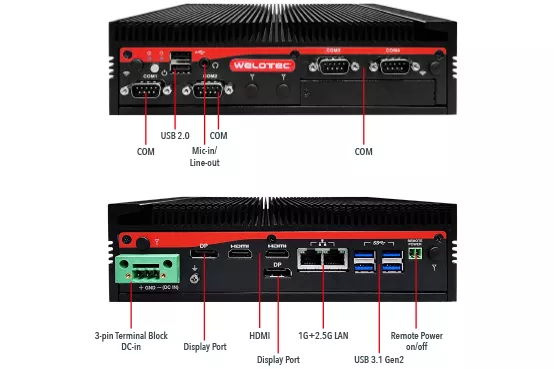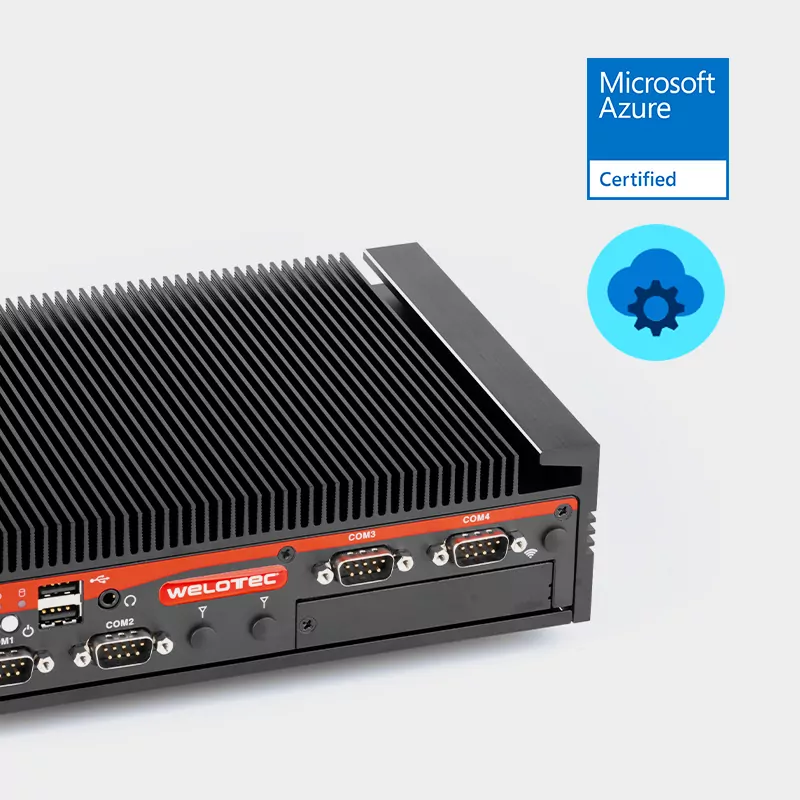Windows 10 or Windows 11 – Is the switch worth it?
Since October last year, Windows 11 – the current version of Microsoft’s established operating system – has been rolled out bit by bit. With Windows 11 IoT Enterprise, Microsoft offers the first version for embedded platforms. Since then, the new version has been slowly but steadily gaining acceptance. This comparatively restrained spread is not by chance, because every new version is initially expected with a certain skepticism. Potentially suspected bugs, supposedly not yet solved security gaps and the change to a new system are considered to be the main reasons for the rather restrained reaction and comparatively slow spread. There is another reason for the release of Windows 11: changed hardware requirements.
In the area of industrial PCs, especially embedded PCs, the new version was also released at the end of 2021. The final version of Windows 10 IoT Enterprise LTSC was also released for this purpose.
Windows 11 IoT Enterprise 2021
Basically, Windows 11 IoT has all the same functions as the previous version, but also features further innovations and special features:
- Modernized user interface
- Functional updates on an annual basis (no longer every six months)
- USB4 and Wifi 6
Windows 11 requires a compatible processor, UEFI Secure Boot and a Trusted Platform module. Already, some industry computers with Tiger Lake Core-i processor, UEFI Secure Boot and TPM 2.0 support Windows 11 IoT Enterprise.
Another capability Windows 11 IoT Enterprise offers is that customers can take advantage of the highly anticipated Windows Subsystem for Linux GUI (WSLg) feature, which brings Linux GUI applications to Windows Subsystems for Linus (WSL).
Advantages USB4 and Wifi 6
With a data transfer rate of up to 40 GB per second, USB4 is a high-speed interface. It is based on the Thunderbolt 3 standard and is therefore compatible with it. Furthermore, various data and display protocols are supported, which is why external graphics cards or 4K monitors can be connected via the Type-C port, for example. The WLAN standard Wifi 6E extends the frequency band to 6 GHz. Due to the theoretical speed of 2.3 Gbit/second, real-time applications can be executed. In addition, there is hardly any interference in the 6 GHz channel, which is why the network connection becomes more reliable. Another advantage is the better integration of Azure IoT Edge on Windows.
Alderamin Pico MK4 with Windows 11 IoT Enterprise
Welotec’s Alderamin Pico MK4 industrial computer is equipped with the 11th generation Intel® Core™ processor (Tiger Lake-UP3) for outstanding performance and capabilities. In addition, the fanless industrial PC features a wide operating temperature range of – 40 °C to + 70 °C, an integrated TPM 2.0 module, and the new Iris Xe GPU with significant performance enhancements in artificial intelligence and machine learning. The Alderamin Pico MK4 is designed for demanding applications with high performance requirements in industrial environments and meets the highest security requirements.
Is the changeover worthwhile?
Basically, it should always be decided in the individual case whether the change is already worthwhile today or whether the requirements allow continuing to use the known systems.
However, you could still consider a change, for example, if WLAN6E or USB4 are required, since these are already supported in the new version. For example, it is possible to test Windows 11 IoT Enterprise now and then switch as soon as an LTSC version is available. Alternatively, Windows 10 IoT Enterprise 2021 can still be used with a long-term availability of 10 years.
New Windows 10 IoT Enterprise LTSC 2021 features
In November 2021, the (probably last) version of Windows 10 IoT Enterprise was released by Microsoft. Compared to the previous versions, some optimizations have been made. These include:
- Dual Application Focus: this feature allows two users on two different devices to work on the same application simultaneously.
- Soft Real Time Support: is particularly suitable for systems that do not meet timing requirements with absolute certainty.
- Azure IoT Edge for Linux on Windows: combines the advantages of both operating systems. Linux can run alongside Windows; Windows drivers are used in parallel.
Windows 10 IoT Enterprise LTSC advantages
LTSC stands for “Long Term Service Channel” and means that the version is available for ten years. The LTSC version only contains security updates, but no function updates and offers additional functions through the lockdown features. The function updates can also be deactivated. The LTSC warranty also means that users do not have to upgrade to the latest operating system version too quickly.


